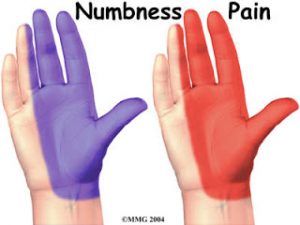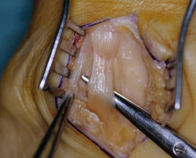What is Carpal Tunnel Syndrome?
Carpal Tunnel Syndrome is caused by compression of the median nerve in the wrist. The median nerve controls some of the muscles in your hand, as well as relaying sensation from the skin. The median nerve lies in a tunnel in your wrist, this is the carpal tunnel. Any swelling or inflammation in this small space can cause compression on the median nerve, and symptoms occur in the hand.
Who gets Carpal Tunnel Syndrome?
Carpal tunnel syndrome occurs most often in people 30 to 60 years old, and is more common in women than men.
Other factors that may lead to carpal tunnel syndrome include:
Alcohol Abuse.
Bone fractures and arthritis of the wrist.
Obesity.
If your body keeps extra fluids during pregnancy or menopause.
Rheumatoid arthritis.
What are the symptoms of Carpal Tunnel Syndrome?
Patients experience clumsiness when gripping objects and may experience numbness and tingling in thumb and next two or three fingers. There also could be pain extending upto the elbow. Problems with fine finger movements (coordination) and Wasting away of the muscle under the thumb (in advanced or long-term cases) can also happen.

What tests are required to diagnose Carpal Tunnel Syndrome?
The clinician would carry out clinical test to identify the condition.Some of the tests include Tapping over the median nerve at the wrist may cause pain to shoot from the wrist to the hand (this is called Tinel’s sign)One other test is done by bending the wrist forward all the way for 60 seconds will usually result in numbness, tingling, or weakness (this is called Phalen’s test)
Further tests like nerve conduction studies sometimes may be necessary to confirm the diagnosis
What is the Management of Carpal Tunnel Syndrome?
There are a number of ways of treating the condition including modifying activities, splinting, steroid injections and surgery. Surgery is recommended if you have had the problem for a long time, your symptoms are severe, non surgical treatments have failed or if the doctor detects weakness of muscles.
What is involved in Carpal Tunnel Decompression surgery?
The median nerve and the tendons that flex (or curl) your fingers go through a passage called the carpal tunnel in your wrist. This tunnel is narrow, so any swelling can pinch the nerve and cause pain. A thick ligament (tissue) just under your skin (the carpal ligament) makes up the top of this tunnel.
The surgery for Carpal Tunnel release is mostly done under Local Anaesthesia without you needing be put to sleep(General Anaesthesia)
First, you will receive numbing medicine (anaesthesia) so that you will not feel pain during surgery. You may be awake but you will also receive medicines to make you relax.
In carpal tunnel release, the surgeon will cut through this ligament to make more space for the nerve and tendons.
First your surgeon will make a small surgical cut in the palm of your hand near your wrist.
Then your surgeon will cut the carpal transverse ligament to ease the pressure on the median nerve. Sometimes, tissue around the nerve is removed as well.
Your surgeon will then close the skin and tissue underneath with sutures (stitches).

What are the possible complications?
With all surgery there is a risk of complications:
- Infection – Any operation can be followed by infection and this would be treated with antibiotics
- Nerve Damage – Nerves running in the region can be bruised or damaged during the surgery and form a painful spot in the scar or numbness. The most commonly involved areas are the heel of the hand or the space between the middle and ring fingers. This complication is rare (2%) but may require a further operation to correct
- Recurrence – If you continue to have attacks of tingling and numbness, it might mean that not all the ligament has been cut. This is rare (1%) but the operation would need to be repeated to correct this
- Grip – You will find that your grip is weaker than previously and slightly painful, causing discomfort in the heel of the hand. Leaning on the heel of your hand can be uncomfortable (pillar pain). This will gradually improve over six months.
What is the long term prognosis after this surgery?
Carpal tunnel release decreases pain, nerve tingling, and numbness, and restores muscle strength. Most people are helped by this surgery

